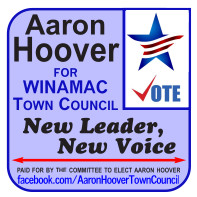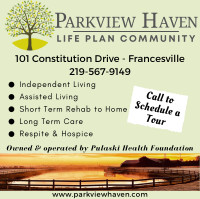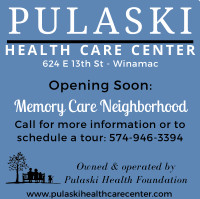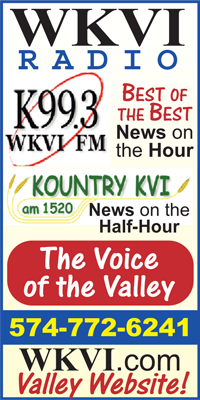Origer outlines 'State of Pulaski County Economy' at PCED Summit
- Details
- Published: Tuesday, 10 March 2015 18:45
FRANCESVILLE - "Our major employers are growing, our workforce is improving, more residents are finding work, and we’re working to make this community a place that people want to call home, where companies want to operate, and tourists want to visit. Things are heading in the right direction.” So says Nathan Origer, the county’s Economic Development director.
Origer shared his observations in a "State of the County Economy" presentation at the 2015 Pulaski County Economic Development Summit Tuesday (March 3) at the Cornerstone Event Center, Francesville. The event was organized by the Pulaski County Economic Development Commission (PCED).
Also speaking was Geoff Schomacker from the Indiana Office of Community and Rural Affairs.
Origer said he was pleased with the attendance at the fifth annual event, despite concerns following an ice storm earlier in the day. Sandy Saltsman catered the meal.
The substance of Origer's speech follows:
2015 State of the County Economy
Speech by Nathan Origer, PCED Director
The successes of the past year, which we’ve repeatedly noted have been about capacity building, have been a bit different than I’ve reported at our last couple of summits. A year ago, we celebrated the Braun Corporation’s expansion, Winamac Coil Spring’s decision to relocate its growing wire-form line to the former Eaton Controls building, and Antares Trailer’s selection of the former Tippecanoe Beverage facility for its Midwestern hub — now the site of the office of the president of Direct Trailer, a company with which Antares recently merged.
Since last March, we haven’t had a single headline-worthy expansion or start-up project like this, but that hasn’t stopped growth in the local economy. In December 2013, our unemployment rate was 5.4 percent; at the end of 2014, it was down to 4.8 percent. Those numbers rarely tell the entire story, and sometimes they’re even misleading. Here’s what really matters: the number of people who officially count in the labor force increased by more than 100, and 170 more people were employed in December 2014 than a year prior. In a county of only 13,000, that’s huge. We’ve actually eclipsed the number of people employed in December 2007, before the recession hit.
In my line of work, we get credit for these things, which is nice. Sure, I do some “hand-holding” for companies when they grow, and I’m not going to shy away from congratulations, but these private-sector companies, and others that have grown quietly, deserve the real credit; I’m just here to help. That’s not to say that the CDC and I aren’t making our contributions to sustainable economic growth in the community, though.
In 2013, we had (television) episodes of Savor Indiana and ExtraordINary Indiana about Pulaski County produced to help us to improve marketing of our community. Over a longer-than-expected process over the last year, we had our county website completely overhauled. There’s still a lot of content-generation work to be done, but our new website is live. And it is beautiful. Check it out: http://www.pulaskionline.org/. What a welcoming front door to Pulaski County it’s going to be for tourists, businesses, and potential new residents alike!
To increase our capacity for industrial growth, we had feasibility studies completed on three sites along US 421 and the CSX (railroad) line. Our committee will be convening soon to review the reports in-depth and to take next steps: approaching landowners and investigating funding sources for land acquisition and infrastructure development.
Working with our advisory commission on Industrial Development, I’ve had appraisals completed on the land in the industrial park in Winamac; I completed a request for information for one company potentially interested in building there, and I’ve been in talks with the broker representing another. Both of these could fall through, but for the first time in a long while, we have some serious interest in the land that we already have.
Next week, I’m accompanying a local company as they request a small tax abatement from the County Council to help them to make expansion — with an expected labor-force increase of 30 over the next few years — fiscally feasible. We’re working with state partners on a lucrative, but somewhat complicated, opportunity for growth of another employer.
For manufacturers to compete and to grow, we have to build workforce capacity. Over the last 18 months or so, we’ve had nearly 100 employees of a half-dozen companies attend various soft-skills courses that my office has hosted and Ivy Tech has conducted. These sessions continue.
As I trust you all know — It’s at the top of the Achievements report included in your program. — we successfully applied for a grant for more than $80,000, and raised nearly $30,000 in local support, to establish a brand-new maintenance and technology program at West Central High School.
This is huge. This program won’t have the effect of making kids maintenance-team–ready the day after graduation, but the skills that they’ll develop, including soft skills, and the preparedness that they’ll have are going to be crucial to moving them and our local economy forward.
Business attraction is wonderful, but relatively uncommon. Expansion is crucial — and clearly happening.
At the root of all economic growth is entrepreneurship. Even the largest companies started in someone’s garage, an old warehouse, or a small storefront. We haven’t lost our focus here. In late August, we were one of the first two communities to participate in the Community Entrepreneurship Initiative, co-sponsored by the Indiana Small Business Development Center (SBDC) and the Office of Community and Rural Affairs (OCRA). We’re still working out the details about what the long-term results of this are to be, but we’re not sitting by idly while we do so. We’re following the kick-off session up with numerous small-business workshops. We’re also looking at ways to strengthen and to recapitalize our fantastic Revolving Loan Fund program.
Perhaps the most fundamental aspect of capacity building is general community capacity building: making sure that this is a place where people want to be. After keeping it on the backburner for far too long, our young professionals group is finally moving forward; our first meeting with a core team is tomorrow evening.
And, of course, we’re a participant in the first round of the State’s brand-new Hometown Collaboration Initiative. I’m not going to spoil our keynote address tonight, and this is Krysten’s (PCED projects coordinator Krysten Hinkle) pet project, anyway, but, well, this thrills me immeasurably.
There’s always work to be done, but we’re doing it. Our major employers are growing, our workforce is improving, more residents are finding work, and we’re working to make this community a place that people want to call home, where companies want to operate, and tourists want to visit. Things are heading in the right direction. We are building Mayberry 2.0.







